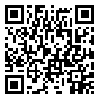دوره 8، شماره 3 - ( بهار 1402 )
جلد 8 شماره 3 صفحات 184-175 |
برگشت به فهرست نسخه ها
Download citation:
BibTeX | RIS | EndNote | Medlars | ProCite | Reference Manager | RefWorks
Send citation to:



BibTeX | RIS | EndNote | Medlars | ProCite | Reference Manager | RefWorks
Send citation to:
Mohammadfam I, Ghahremani Namain S, Gholamizadeh K, Borgheipour H. Evaluation and Management of Health and Safety Risks of Chlorine Gas in Transportation Routes. Health in Emergencies and Disasters Quarterly 2023; 8 (3) :175-184
URL: http://hdq.uswr.ac.ir/article-1-421-fa.html
URL: http://hdq.uswr.ac.ir/article-1-421-fa.html
Evaluation and Management of Health and Safety Risks of Chlorine Gas in Transportation Routes. فصلنامه سلامت در حوادث و بلایا. 1402; 8 (3) :175-184
چکیده: (3039 مشاهده)
Background: More than 90% of goods movement in Iran is done by road transport. A significant part of these materials is dangerous goods. Considering that chlorine gas is considered a toxic and oxidizing substance, predicting the way of release and mortality due to accidental leakage of chlorine gas can be a crucial tool in adopting preventive strategies. This study aims to evaluate the safety of chlorine gas transportation and analyze the consequences of its release.
Materials and Methods: This cross-sectional-analytical study was conducted in 2020 in Tehran. The transportation risk rating index was used to measure and evaluate the quantitative risk of transportation of hazardous materials. PHAST software was used to determine the consequence of possible accident scenarios on the transportation route. In the final stage, according to the amount of traffic, the time and manner of response to emergencies by the fire and emergency organization were simulated using Pathfinder software.
Results: In this evaluation, the chlorine risk rating was calculated as 192. The worst possible scenario was a catastrophic rupture of chlorine in the second half of 2021. As a result of the accident, up to a radius of 1800 m from the center of the leak, the dangerous concentration is equal to 20 ppm, that is, equal to the ERPG3 limit. The simulation results showed that the release of poisonous chlorine gas leads to the death of 10% of people up to a radius of 192 m around the scenario.
Conclusion: In the scenario of the sudden release of chlorine, in which people need to escape and move away from the accident site, it was found that it takes more than 24 minutes to leave the ERPG-3 area. Considering that the assumed average speed of 1.15 m/s is the average speed of people and naturally the speed of sensitive people is much lower in the conditions of an accident, it can be concluded that in the scenario of a sudden leak, a significant part of the people involved in the accident may suffer severe and irreparable damage.
Materials and Methods: This cross-sectional-analytical study was conducted in 2020 in Tehran. The transportation risk rating index was used to measure and evaluate the quantitative risk of transportation of hazardous materials. PHAST software was used to determine the consequence of possible accident scenarios on the transportation route. In the final stage, according to the amount of traffic, the time and manner of response to emergencies by the fire and emergency organization were simulated using Pathfinder software.
Results: In this evaluation, the chlorine risk rating was calculated as 192. The worst possible scenario was a catastrophic rupture of chlorine in the second half of 2021. As a result of the accident, up to a radius of 1800 m from the center of the leak, the dangerous concentration is equal to 20 ppm, that is, equal to the ERPG3 limit. The simulation results showed that the release of poisonous chlorine gas leads to the death of 10% of people up to a radius of 192 m around the scenario.
Conclusion: In the scenario of the sudden release of chlorine, in which people need to escape and move away from the accident site, it was found that it takes more than 24 minutes to leave the ERPG-3 area. Considering that the assumed average speed of 1.15 m/s is the average speed of people and naturally the speed of sensitive people is much lower in the conditions of an accident, it can be concluded that in the scenario of a sudden leak, a significant part of the people involved in the accident may suffer severe and irreparable damage.
| بازنشر اطلاعات | |
 |
این مقاله تحت شرایط Creative Commons Attribution-NonCommercial 4.0 International License قابل بازنشر است. |





